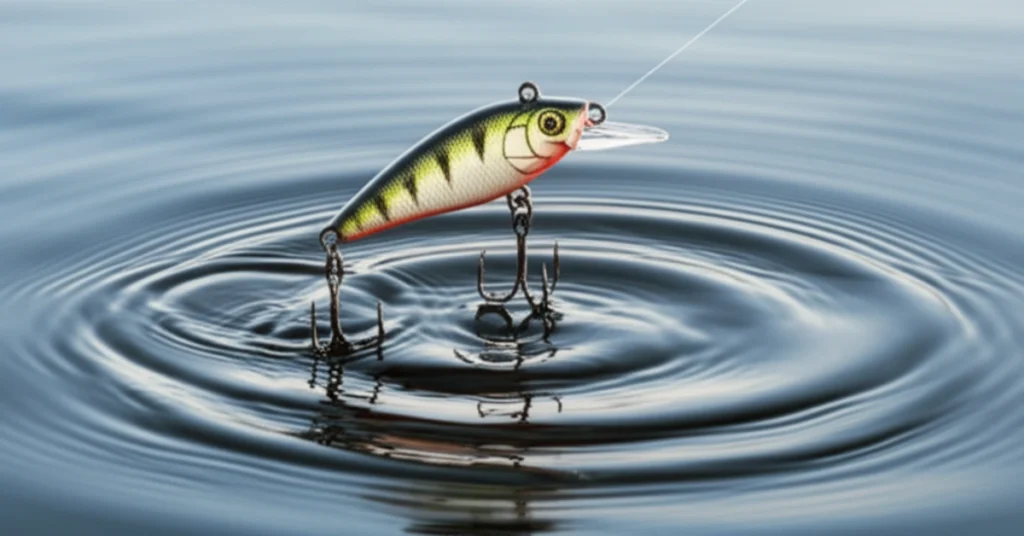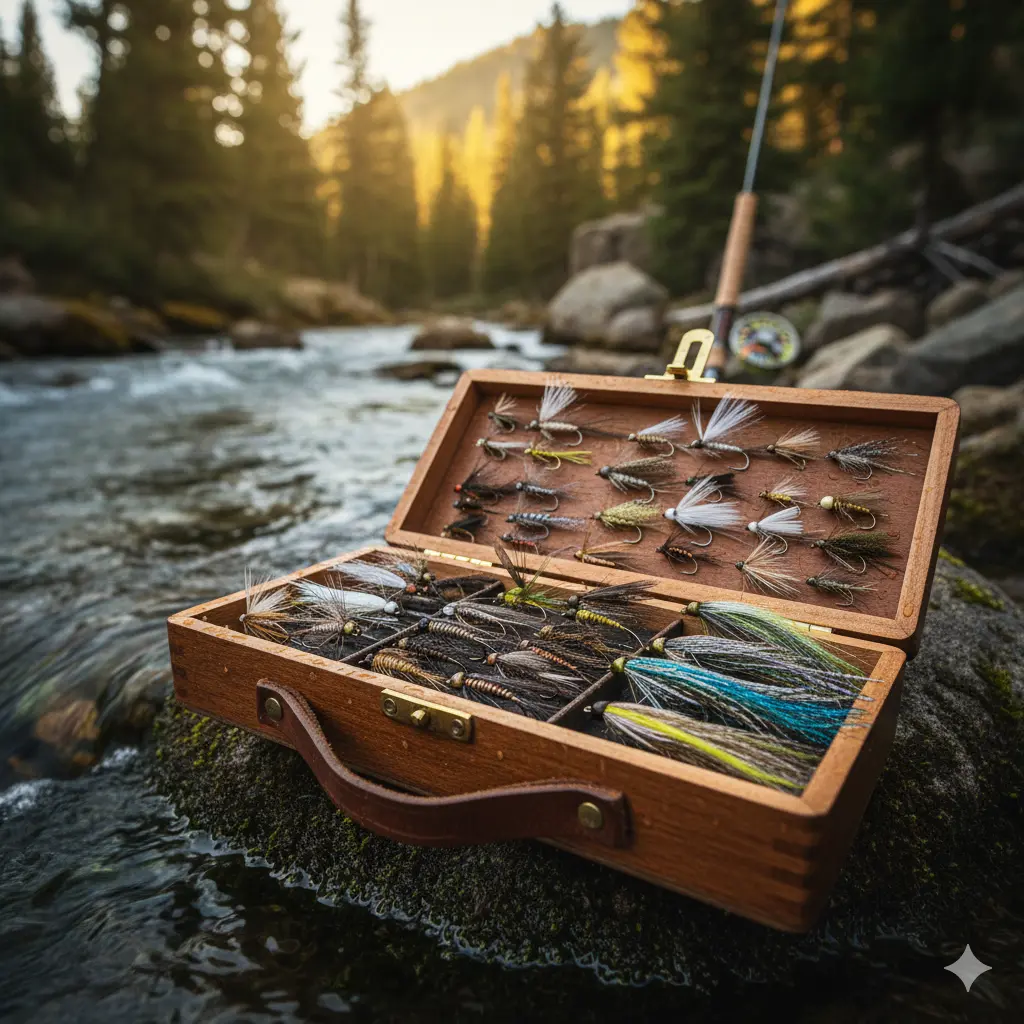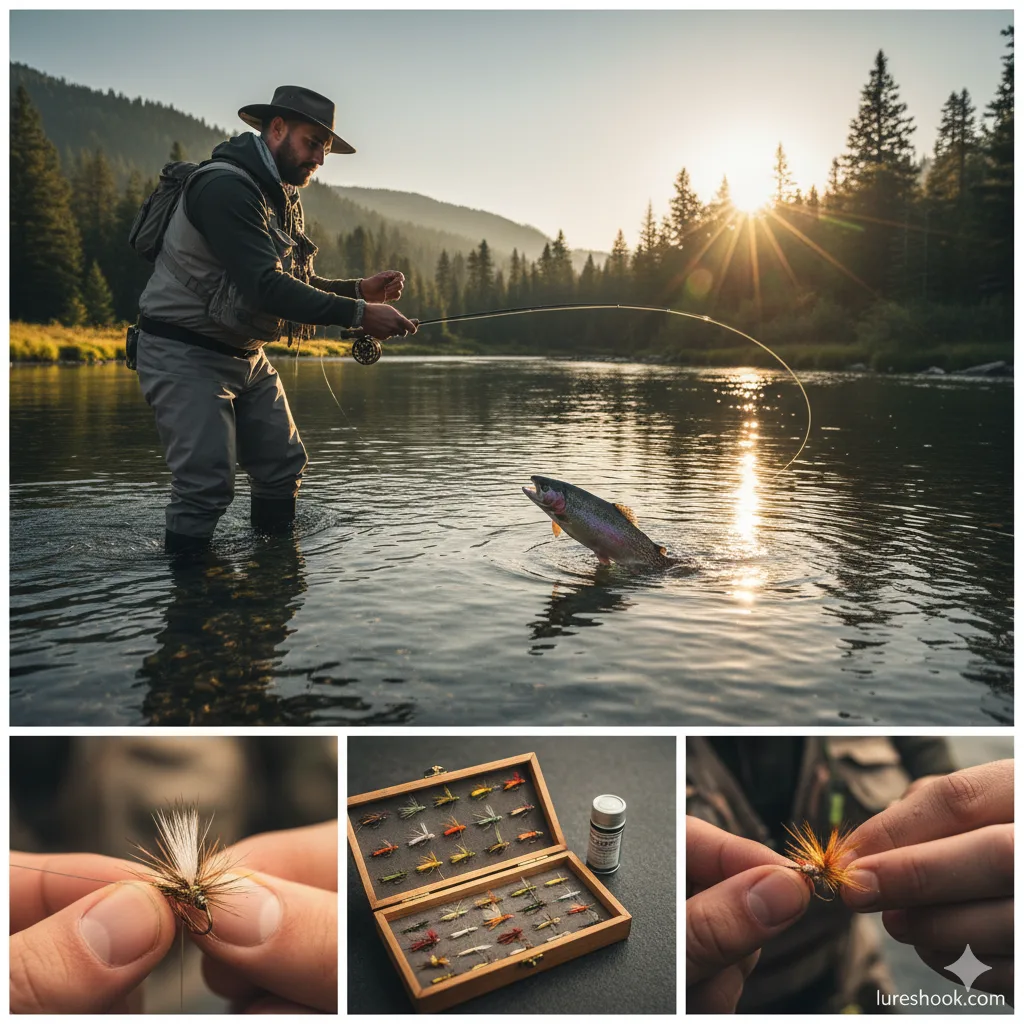Walking Baits: The Ultimate Guide to Topwater Success
There’s nothing in fishing quite like the heart-stopping explosion of a bass annihilating a topwater lure. If you want to experience that thrill consistently, you need to master one of the most effective and exciting techniques in angling: using walking baits. These topwater plugs, with their signature side-to-side gliding action, call predators from a distance and trigger aggressive, instinctual strikes. This comprehensive guide will transform you from a beginner into a confident angler, capable of making these lures dance across the surface and entice even the most cautious fish.
We will break down everything you need to know, from the fundamental mechanics to advanced strategies that the pros use. You’ll learn the proper gear setup, the nuances of the retrieve, and how to select the perfect lure for any condition. This isn’t just about casting and hoping; it’s about understanding the art and science behind walking baits to unlock their full potential and put more, and bigger, fish in your boat.
Table of Contents
- What is walking baits?
- Key Benefits and Importance
- Complete Step-by-Step Guide
- Expert Tips & Best Practices
- Common Mistakes to Avoid
- Advanced Strategies for 2024/2025
- Essential Tools & Resources
- Frequently Asked Questions
What is walking baits?
Walking baits are a category of hard-bodied, topwater fishing lures designed to glide from side-to-side across the water’s surface in a zigzag pattern. This specific action, known as “walking the dog,” mimics a wounded or fleeing baitfish, making it an irresistible target for predatory fish like largemouth and smallmouth bass.
Unlike lures that have a built-in action from a lip or bill, the angler generates the entire movement of walking baits through a specific cadence of rod twitches and line retrieval. Success in walking bait fishing depends on mastering these inputs. This complete walking bait guide covers everything from initial walking bait selection to subtle walking bait presentations. Understanding the right walking bait retrieve is the key that unlocks the lure’s magic, especially for targeting aggressive walking bait bass. Proper technique is paramount.
Key Components
- Body Shape: Typically elongated and cylindrical or cigar-shaped, designed for minimal water resistance and maximum side-to-side glide.
- Weighting System: Internal weights, often in the tail, cause the lure to sit tail-down at rest. This posture is crucial for starting the walking action easily.
- Line Tie Placement: Located on the nose of the lure, allowing it to pivot and turn sharply with each twitch of the rod.
- Hooks: Equipped with two or three sharp treble hooks to ensure a high hook-up ratio on explosive surface strikes.
Why walking baits Matters: Key Benefits
Walking baits are more than just another lure; they are a strategic tool that excels in specific scenarios and offers distinct advantages over other baits. Their ability to draw fish from long distances and deep water is unparalleled, making them a go-to choice for anglers looking to cover water and locate active fish populations quickly. The visual nature of the strikes they generate also makes this one of the most exciting ways to fish.
Unmatched Drawing Power
The rhythmic splashing and side-to-side commotion of walking baits create a significant surface disturbance. This combination of visual and auditory cues acts like a dinner bell, calling fish in from a wide radius. For example, on a calm morning over a large, submerged grass flat, a walking bait can pull bass from 20 feet away or more, turning a seemingly dead area into a hotspot of activity.
Efficiency and Versatility
These lures allow you to fish large areas of water much faster than with slower, subsurface techniques. You can effectively dissect points, flats, and shorelines to find where fish are holding. Furthermore, by simply changing the speed and cadence of your retrieve, you can adapt your presentation to match the mood of the fish—from a slow, wide glide for lethargic bass to a fast, frantic skipping action for schooling fish.
“A walking bait doesn’t just attract fish; it forces them to make a decision. The constant, rhythmic action triggers a predatory response that other lures can’t replicate. It’s a true power-fishing classic.”
Complete Guide to walking baits – Step-by-Step
Mastering the use of walking baits involves three distinct phases: selecting the right gear, choosing the appropriate lure for the conditions, and executing the retrieve flawlessly. Follow these steps to build a solid foundation for topwater success.
Step 1: Selecting the Right Gear
Your equipment plays a critical role in your ability to properly work the bait and land fish. The wrong setup will lead to frustration and poor lure action.
- Rod: A 6’8″ to 7’3″ medium-power casting rod with a fast or extra-fast action is ideal. The shorter length prevents the rod tip from hitting the water during the retrieve, and the fast tip allows for sharp, crisp twitches.
- Reel: A high-speed baitcasting reel (7.1:1 gear ratio or higher) is essential. This allows you to quickly pick up slack line between rod twitches, which is crucial for maintaining contact and control of the lure.
- Line: Most experts prefer 30-50 lb braided line tied to a 12-18 inch, 15-20 lb monofilament leader. The braid has no stretch for instant lure response and solid hooksets, while the monofilament leader provides a short shock absorber and is less visible to fish.
Step 2: Effective Walking Bait Selection
Choosing the right lure is about matching the hatch and the conditions. Consider size, sound, and color to make the best choice.
This part of the process, walking bait selection, is critical. Start by analyzing the primary forage. If bass are feeding on small shad, a smaller 3-4 inch lure is best. For larger herring or gizzard shad, move up to walking bait sizes of 5 inches or more. In terms of sound, use rattling baits in choppy or stained water to help fish locate them. In clear, calm conditions, a silent or subtle “one-knocker” version is often more effective.
Step 3: Mastering the Walking Bait Retrieve
This is where skill truly comes into play. The goal is to create a rhythmic, side-to-side cadence known as “walking the dog.”
Cast the lure out and let the ripples settle. Point your rod tip down towards the water. Begin a sequence of short, sharp twitches or snaps of the rod tip while simultaneously turning the reel handle to gather the slack line. The key is rhythm: twitch-reel, twitch-reel, twitch-reel. It’s a fluid motion where the rod imparts the action and the reel simply manages the slack. A consistent, rhythmic walking bait retrieve is the most important of all walking bait techniques.
Expert Tips & Best Practices for walking baits
Once you have the basics down, applying a few best practices will dramatically increase your success rate. These walking bait tips are designed to help you catch more fish and adapt to changing conditions on the water.
For Beginners:
- Start with a Rhythmic Cadence: Don’t worry about speed at first. Focus on creating a consistent “tick-tock” rhythm. A steady, medium-paced retrieve is the most versatile and will catch fish in most situations.
- Keep Your Rod Tip Down: Pointing your rod tip towards the water is non-negotiable. This ensures your twitches pull the lure’s nose down and to the side, creating the gliding action. An upward-pointing rod will pull the lure out of the water.
- Wait for the Weight: When a bass strikes, your instinct is to set the hook immediately. Resist it! Wait until you feel the weight of the fish on your line before sweeping the rod. Setting on the splash will pull the lure away from the fish 90% of the time.
For Advanced Users:
- Incorporate Pauses: One of the most deadly advanced walking bait presentations is the pause. After a series of 5-10 twitches, let the bait sit still for 2-3 seconds. This often triggers strikes from following fish that are hesitant to commit to a moving target.
- Vary Your Cadence and Speed: Don’t be a one-trick pony. Experiment with your retrieve throughout a single cast. Start fast, then slow down, then pause. This erratic action better mimics a panicked or injured baitfish and can provoke strikes from conditioned fish.
5 Common walking baits Mistakes to Avoid
Even experienced anglers can fall into bad habits. Avoiding these common mistakes when using walking baits is crucial for consistent success and will help you get the most out of this technique.
Mistake #1: Using the Wrong Rod Action
The Problem: Many anglers use a rod that is too stiff or has a moderate, parabolic bend. A stiff rod has no “give” and can pull the lure away from the fish on the hookset, while a moderate rod is too soft to impart the sharp, crisp action needed to make the lure walk effectively.
The Solution: Stick to a rod with a fast or extra-fast action. This provides a soft enough tip to work the bait properly but has the strong backbone needed for a powerful hookset and to control the fish.
Mistake #2: Setting the Hook on the Splash
The Problem: This is the most common mistake in all of topwater fishing. The visual excitement of the strike causes a premature, reflex-driven hookset. This yanks the lure out of the fish’s mouth before it has fully engulfed it.
The Solution: Train yourself to hesitate. Say “Got ’em” out loud, then set the hook. This small delay is often enough. The key is to wait until you feel the rod load up with the fish’s weight before you swing.
Mistake #3: A Monotonous Retrieve
The Problem: Fish can become conditioned to a steady, unchanging retrieve, especially in highly pressured waters. If you’re getting follows but no commitments, your presentation might be too predictable.
The Solution: Be unpredictable. Mix in pauses, speed bursts, and occasional hard rips of the rod. Make the lure look truly erratic and panicked to trigger that predatory instinct.
Advanced walking baits Strategies for 2024/2025
As fishing pressure increases and technology evolves, staying ahead of the curve requires advanced thinking. These cutting-edge approaches for walking baits will give you an edge in the modern angling landscape.
Forward-Facing Sonar Integration
The rise of live, forward-facing sonar (FFS) has changed the game. Use FFS to locate suspended or cruising bass in open water. Cast your walking bait well past the target, and begin your retrieve to bring the lure into their cone of vision. You can watch the fish react in real-time and adjust your cadence—slowing down, speeding up, or pausing—to trigger a strike. This turns traditional blind casting into a precision-guided attack.
Walking in Place
A highly effective technique for targeting specific cover like a dock post, laydown, or submerged brush pile is to “walk the bait in place.” Instead of a steady retrieve, use very subtle twitches with minimal line pickup. This allows the lure to pivot and splash over the target for an extended period, aggravating a lethargic walking bait bass into striking without ever leaving the high-percentage zone.
Essential Tools & Resources for walking baits
Having the right equipment and knowledge resources is fundamental to your success. Here are the must-have tools and where to find more information.
Recommended Tools:
- Quality Walking Baits: Start with proven classics like the Heddon Zara Spook, Strike King KVD Sexy Dawg, or Megabass Giant Dog-X. Having a mix of sizes and both rattling and silent models is key.
- Braid to Mono/Fluoro Leader: A main line of 30-50 lb braid offers zero stretch for better action and hooksets. Attach an 18-inch leader of 15-20 lb monofilament (which floats) using an FG or Albright knot.
- Split Ring Pliers & Upgraded Hooks: Factory hooks can bend out on large fish. Invest in a good pair of split ring pliers to upgrade to stronger, sharper treble hooks like Gamakatsu EWG or Owner ST-36.
Additional Resources:
- YouTube Fishing Channels: Channels like TacticalBassin’ and Flukemaster provide excellent visual tutorials on walking bait techniques and retrieve cadences.
- Professional Angler Blogs: Follow the blogs and social media of top pro anglers. They often share cutting-edge walking bait tips and lure modifications from the tournament trail.
Frequently Asked Questions About walking baits
Q1: What are the key factors in walking bait selection concerning colors and sizes?
Answer: Your walking bait selection should be driven by water clarity and forage. For walking bait sizes, try to “match the hatch”; use smaller 3-4 inch baits when bass are feeding on small shad and larger 5-6 inch models for big gizzard shad or herring. For walking bait colors, a good rule of thumb is to use natural, translucent patterns (shad, bone, chrome) in clear water and solid, opaque colors (black, white, chartreuse) in stained or muddy water. The goal is to balance visibility with realism.
Q2: When is the best time of day or year to use walking baits?
Answer: Walking baits excel when bass are actively feeding near the surface. Prime times include low-light periods like early morning and late evening. They are most effective in the post-spawn through fall periods when water temperatures are above 60°F. However, they can also be deadly on calm, overcast days or when fish are schooling on bait in open water.
Q3: My lure keeps diving or tangling in the line. What am I doing wrong?
Answer: This is usually caused by an overly aggressive rod twitch or using a rod that is too long. Use short, sharp snaps of the wrist, not long pulls with your arm. If your rod is over 7’3″, the tip may be dipping too far and catching the line. Also, ensure you are using a floating line combination (braid to mono leader) and not straight fluorocarbon, which sinks and pulls the nose of the lure down.
Q4: Can I use walking baits in windy conditions?
Answer: Yes, absolutely! In fact, a light to moderate chop on the water can make walking baits even more effective. The broken surface texture conceals the lure, making it look more natural and causing bass to react with less hesitation. Choose a heavier, louder, rattling model to help fish locate it amidst the wave action.
Conclusion: Master walking baits for Long-term Success
Mastering the art of using walking baits is a journey, but one that rewards anglers with some of the most visually spectacular and memorable catches of their lives. From gear selection to the subtle rhythm of the retrieve, every element plays a part in bringing the lure to life. By understanding the core principles and avoiding common pitfalls, you can turn this topwater technique into a reliable weapon in your angling arsenal.
The effectiveness of walking bait fishing is timeless. As you continue to practice, you’ll develop a feel for the right cadence and learn to read the fish’s mood. Embrace the process, apply the advanced walking bait techniques discussed in this guide, and prepare for the explosive topwater action that awaits. Your confidence will grow with every successful retrieve and every heart-pounding strike.
Related Articles You Might Find Helpful:
- A Deep Dive into Advanced Walking Bait Bass Techniques
- Choosing Topwater Lures: Frogs vs. Poppers vs. Walking Baits
- How to Choose the Right Fishing Line for Every Technique
What’s Your walking baits Experience?
What’s your go-to walking bait, and what’s the biggest fish you’ve ever caught on one? Share your success stories and favorite tips in the comments below!
Note: This guide reflects current best practices and is updated regularly to ensure accuracy. Last updated: October 17, 2023



